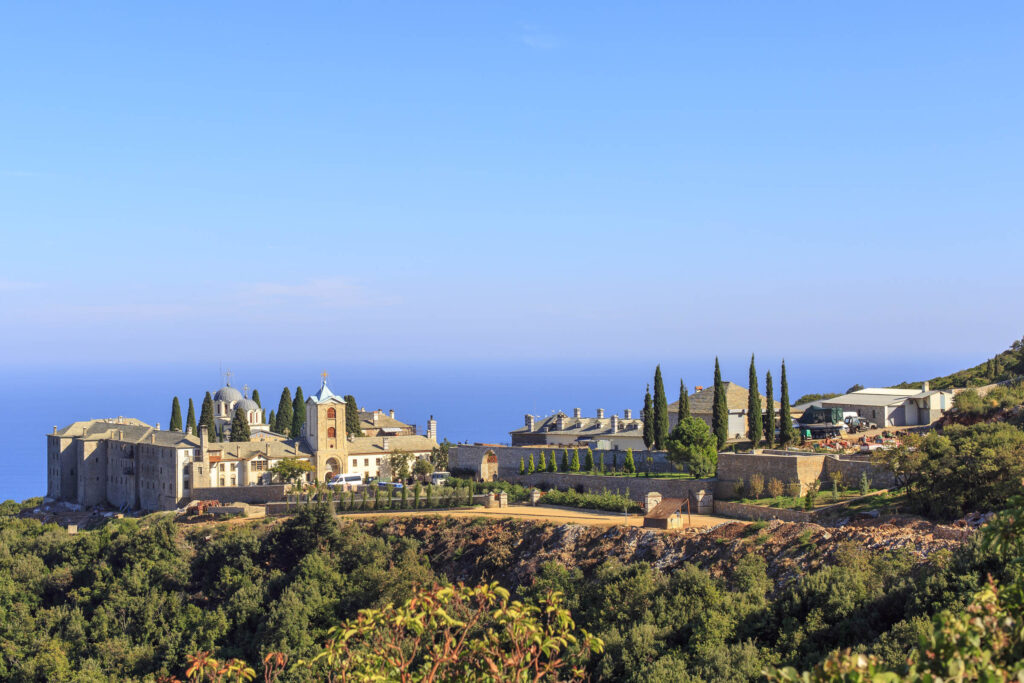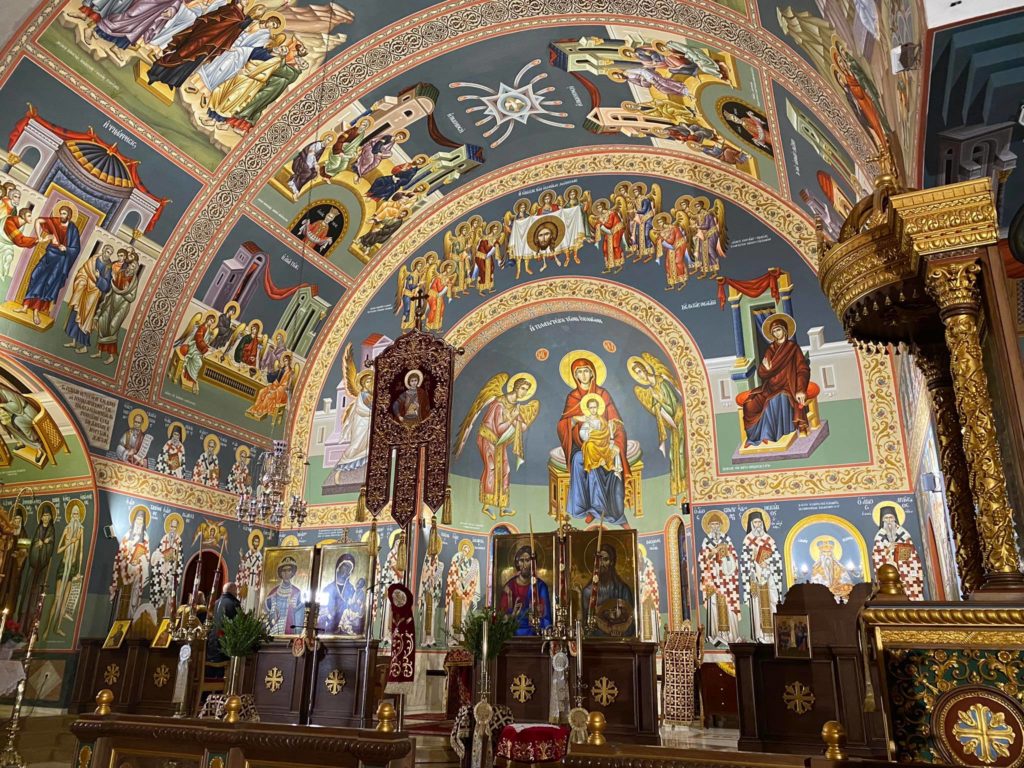Romanian Skete Prodromos

The Romanian Skete Prodromos (Romanian: Schitul românesc Prodromu, Greek: Τιμίου Προδρόμου) is a Romanian cenobitic skete belonging to the Great Lavra Monastery, located in the eastern extremity (called Vigla) of the Eastern Orthodox Monastic State of the Holy Mountain Athos, between the Aegean Sea in the East and the peak of Athos rising 2033 m in the West, nearby the cave of Athanasios the Athonite. Its name, Prodromos, is the Greek for “The Forerunner”, a cognomen of St. John the Baptist.
Spiritually, through its mother monastery, and like all the Athos peninsula, it is under the jurisdiction of the Ecumenical Patriarchate of Constantinople.
The oldest records of Romanians in this place are from around 1750, when a few monks, under the guidance of a hieromonk Macarie, lived there in seclusion near the chapel of St. John the Baptist (which gave its name to the skete). Around 1800, there were three Romanian hermits, confessor Iustin the Vlach and two apprentices, Patapie and Grigore. It is said that once Iustin drove out a swarm of locusts from the Great Lavra by sprinkling them with holy water.
As the number of Romanian monks increased around him, Iustin thought of broadening their cell by making it into a skete, and made a request to the Great Lavra, who agreed and gave its blessing. But Iustin died in 1816. His successors asked the Great Lavra for a deed to establish the skete. In 1820, they received a document of 13 articles, stating that a cell would be recognized “to the devout tribe of Moldavians for creating a coenobitic skiti”. The operating conditions were that it belongs to the Great Lavra, that it will be a cenobitic skete, will have a “dikaios” (=hegumen), will have its own seal, and will obey to its duties to the Great Lavra (like the other Athonite sketes).
The building of the skete’s church began in 1857 and ended 1866 when, on 21 May, on Saints Constantine and Helena feast day, it was sanctified. The service was conducted by hegumen Isaia Vicol from Golia Monastery, in Iaşi. The church was sacred to the Baptism of Jesus.
Initially named Moldavian Skete Prodromos, after Wallachia and Moldavia united on January 24, 1859 giving birth to a new state, Romania, it changed its name to Romanian Skete Prodromos. In 1889, the Great Lavra signed a new deed to Prodromos Skete, strengthened by the seal of the Ecumenical Patriarch Dionysius V of Constantinople. It had 16 articles and, stated among other things, that the skete has the cognomen “Romanian”.
- Source: asceticexperience.com
H αναδημοσίευση του παραπάνω άρθρου ή μέρους του επιτρέπεται μόνο αν αναφέρεται ως πηγή το ORTHODOXIANEWSAGENCY.GR με ενεργό σύνδεσμο στην εν λόγω καταχώρηση.
Ακολούθησε το ORTHODOXIANEWSAGENCY.gr στο Google News και μάθε πρώτος όλες τις ειδήσεις.


















